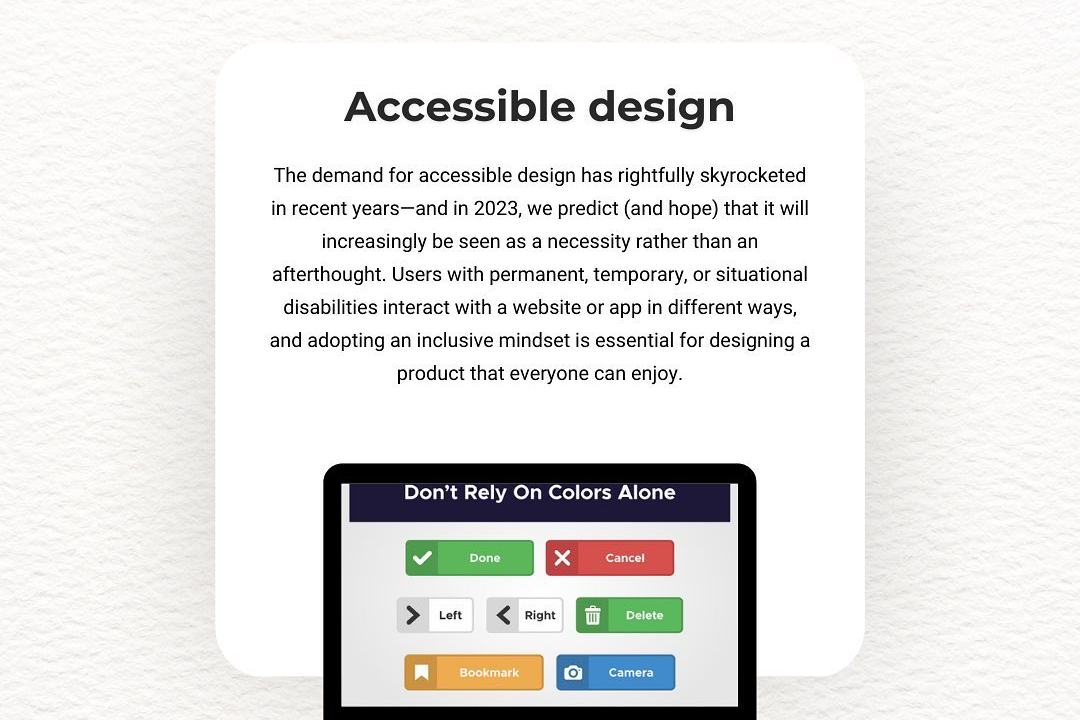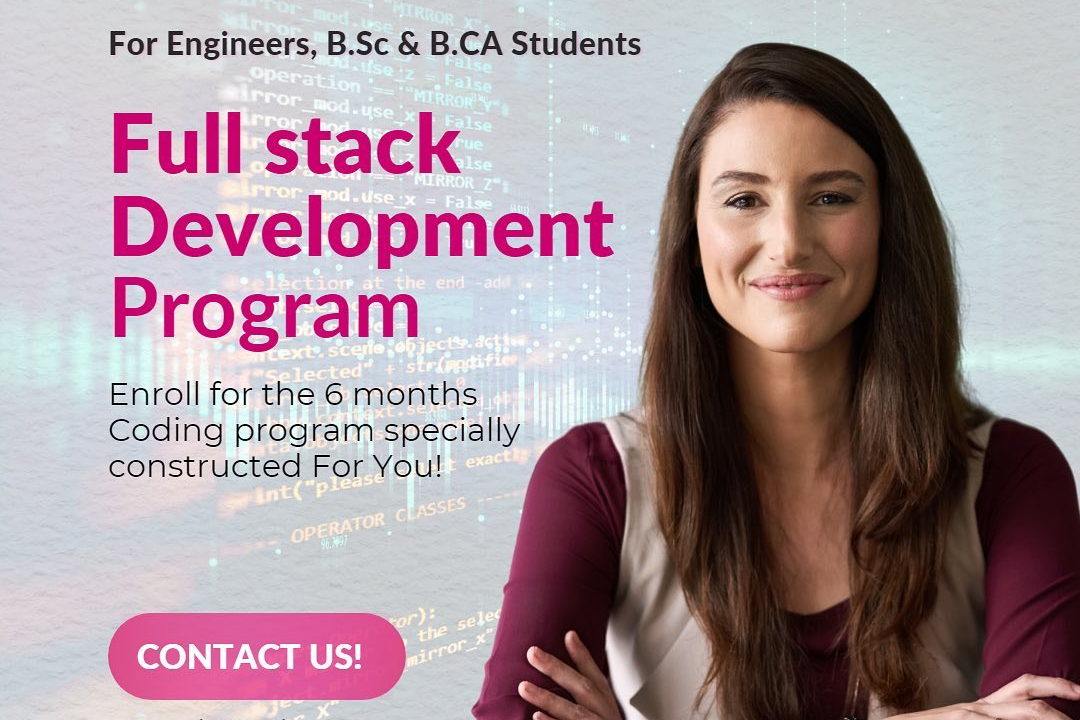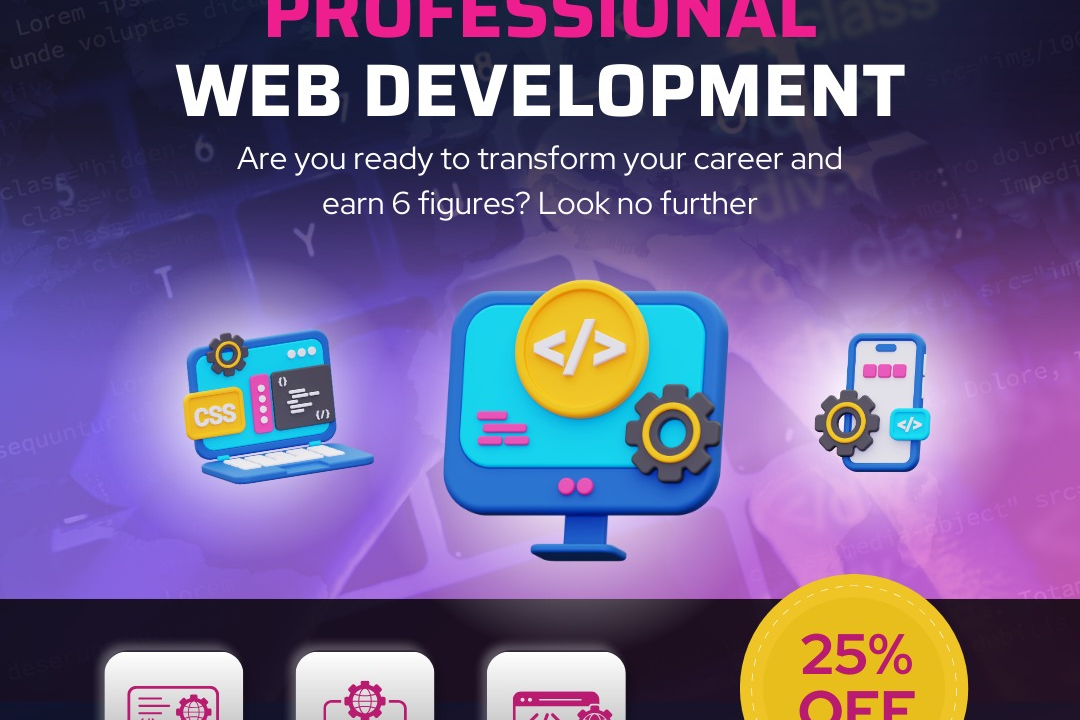Laravel Interview Questions And Answers 2019
Essential Laravel Interview Questions and Answers for 2023
Laravel Interview Questions And Answers 2019
Laravel interview questions and answers from 2019 serve as a valuable resource for candidates preparing for interviews in web development roles, particularly those focused on PHP frameworks. These questions cover essential concepts, features, and best practices of Laravel, providing insights into common industry queries and challenges. Reviewing these materials not only enhances a candidate's technical knowledge but also builds confidence in discussing their practical experience with Laravel. This preparation is crucial for showcasing competence in building robust, scalable applications, aligning with the industry's demand for skilled Laravel developers.
To Download Our Brochure: https://www.justacademy.co/download-brochure-for-free
Message us for more information: +91 9987184296
1 - What is Laravel?
Laravel is a PHP framework designed for building web applications with an elegant syntax. It follows the MVC (Model View Controller) architecture and aims to make the development process more streamlined and efficient by providing built in features such as routing, authentication, and ORM (Eloquent).
2) What are the benefits of using Laravel?
Some benefits of using Laravel include its expressive syntax, robust security features, built in task scheduling, Eloquent ORM for database interactions, support for RESTful routing, easy integration with testing tools, and a strong community that offers comprehensive documentation and resources.
3) Explain the MVC architecture in Laravel.
MVC stands for Model View Controller. In Laravel, the Model handles data and business logic, the View is responsible for the presentation layer (what the user sees), and the Controller handles user requests and interactions, mediating between the Model and View for smoother application flow.
4) What is Eloquent ORM?
Eloquent is Laravel’s built in Object Relational Mapping (ORM) tool that allows developers to interact with the database using a simple, expressive syntax. It allows for database interactions via models, making it easy to perform CRUD (Create, Read, Update, Delete) operations without dealing directly with SQL queries.
5) How does routing work in Laravel?
Routing in Laravel is managed through route files located in the `routes` directory. Developers can define routes using simple syntax, directing incoming requests to specific controllers, and can define parameters and middleware for enhanced control over how requests are handled.
6) What is Artisan in Laravel?
Artisan is the command line interface included with Laravel that provides a number of helpful commands for development tasks, such as generating boilerplate code for controllers, models, and migrations, and allows developers to automate repetitive tasks within their Laravel applications.
7) What are migrations, and why are they important?
Migrations are version control for your database schemas. They allow developers to define database changes in PHP code, making it easy to share changes with the team and maintain the integrity of the database schema throughout different environments.
8) Explain middleware in Laravel.
Middleware acts as a filter for HTTP requests entering your application, allowing you to inspect, modify, or reject requests before they reach your application logic. Common uses include authentication, logging, and CORS headers.
9) What is the use of service providers in Laravel?
Service providers are the central place for configuring and registering application services. They bootstrap all the components of your application and are crucial for dependency injection, making it easier to manage services and dependencies.
10) How can you perform validation in Laravel?
Validation in Laravel can be done using the built in validation rules and methods available in the `Validator` facade or through request validation objects. You can easily define rules for various input fields and handle validation responses.
11 - What is the purpose of the .env file in Laravel?
The `.env` file is used for environmental configuration in Laravel, allowing developers to easily manage sensitive information and configuration settings such as database credentials and API keys without hardcoding them into the application.
12) Explain Laravel's templating engine, Blade.
Blade is Laravel’s powerful templating engine that allows developers to define dynamic templates with an easy to use syntax. It offers features like template inheritance, sections, display variables, and control structures, enabling clean and maintainable views.
13) What are events and listeners in Laravel?
Events in Laravel provide a simple observer pattern implementation, allowing the application to subscribe and listen for events that occur within the system. Listeners are responsible for handling actions triggered by these events, promoting loose coupling and better organization of code.
14) How does Laravel handle authentication?
Laravel handles authentication using built in features such as the `Auth` facade, which provides an easy way to implement user registration, login, and logout mechanisms. It also supports user role management and offers customizable authentication guards.
15) What is the purpose of Laravel's Queue system?
Laravel's Queue system allows for deferred execution of tasks, running jobs asynchronously in the background. This is particularly useful for tasks like sending emails, processing uploads, or executing time consuming operations, improving application performance and user experience.
16) What is Laravel Mix?
Laravel Mix is a powerful asset compilation tool that provides a clean, fluent API for defining Webpack build steps for your Laravel applications. It simplifies tasks such as versioning, CSS pre processing (using Sass or Less), and JavaScript transpilation (using Babel).
17) How do you implement form validation in Laravel?
Form validation in Laravel can be easily implemented using the `validate()` method on requests in controllers or through Form Request classes. You can specify rules directly in the method or create a dedicated Form Request class to organize validation logic.
18) What are Laravel policies and gates?
Laravel policies and gates are used for authorization logic, determining whether a user can perform a certain action. Gates are simple closures defined in the AuthServiceProvider, while policies are classes that organize authorization logic for a specific model or resource.
19) Explain how to use Laravel's task scheduling feature.
Laravel's task scheduling allows you to define and manage scheduled tasks fluently within your application using the `schedule` method in the `Kernel` class. This eliminates the need for manual cron entries; instead, you can set frequencies and conditions for running tasks programmatically.
20) What is the role of CSRF protection in Laravel?
Cross Site Request Forgery (CSRF) protection is built into Laravel to secure forms against CSRF attacks. Laravel automatically generates CSRF tokens for forms, which must be included in the request to validate the session’s authenticity, preventing unauthorized actions from malicious users.
21 - Describe the use of Localization in Laravel.
Localization in Laravel allows developers to create multilingual applications by storing language strings in files and loading them as needed. Laravel provides a simple API for implementing translations, allowing you to switch languages dynamically based on user preferences or application settings.
22) What are resource controllers in Laravel?
Resource controllers in Laravel simplify the process of handling typical CRUD operations by bundling them into a single controller. By using resource routing, developers can create a controller that automatically maps to routes for creating, reading, updating, and deleting resources.
23) Explain the concept of dependency injection in Laravel.
Dependency injection in Laravel allows classes to have their dependencies automatically resolved and injected by the service container. This promotes cleaner code, easier testing, and better maintainability by decoupling components and adhering to the Single Responsibility Principle.
24) How can you implement Laravel's caching system?
Laravel provides a robust caching system that supports various drivers (file, database, Redis, etc.). You can use caching through the `Cache` facade to store and retrieve items with customizable expiration times, enhancing application performance by reducing database queries.
25) What is Honeypot in Laravel?
Honeypot in Laravel is a method of spam protection that involves adding a concealed field to forms. Bots that automatically fill out forms will complete this hidden field, allowing you to detect and reject such submissions as potential spam while not affecting legitimate users.
26) How do you integrate APIs in Laravel?
Integrating APIs in Laravel can be achieved by using HTTP clients like Guzzle, which allows you to make API requests. The framework also provides a built in HTTP client as of Laravel 7, simplifying API interactions and making it easier to manage requests and responses.
27) What are Laravel Facades?
Facades in Laravel provide a static interface to classes in the service container, simplifying the process of accessing services. They enable developers to use functionality without needing to instantiate the classes directly, making the code cleaner and more expressive.
28) What is the Laravel Seeder?
Seeder classes in Laravel allow developers to populate the database with sample or test data. By using the `db:seed` command, seeder classes can be created to repopulate the database with data without the need to manually insert records.
29) What are Traits in Laravel?
Traits in Laravel enable code reuse across multiple classes without the complexity of inheritance. They allow developers to group functionalities that can be utilized in different classes, promoting cleaner and more modular code.
30) Explain how to handle file uploads in Laravel.
Handling file uploads in Laravel is facilitated by the `Storage` facade or the global `Request` object. Developers can manage file uploads by validating files, moving them to specific directories, and storing their paths in the database effortlessly, ensuring smooth upload processes.
31 - What role does the Route Model Binding play?
Route Model Binding in Laravel allows developers to automatically inject model instances into routes based on their IDs or other attributes. This feature streamlines code and enhances readability by removing the need for manual fetching of models within the controller.
32) How can you use the Laravel Telescope?
Laravel Telescope is an elegant debugging assistant for Laravel applications, providing insights into requests, exceptions, database queries, and more. Developers can use Telescope to monitor and analyze the application’s performance, debugging issues efficiently with minimal setup.
33) What are the advantages of using Laravel Nova?
Laravel Nova is an elegant administration panel designed for Laravel applications. It provides a beautiful, responsive interface for managing resources, and includes features like filters, metrics, and custom tools, allowing developers to create admin panels with minimal effort.
34) Explain the concept of Jobs and Queues in Laravel.
Jobs and Queues in Laravel enable background processing of time consuming tasks. By dispatching jobs to queues, tasks such as sending emails or processing images can run out of the main request lifecycle, improving application response times and user experience.
35) What is Laravel's built in authentication scaffold?
Laravel provides built in authentication scaffolding, allowing developers to quickly set up authentication functionality using a few commands. This includes registration, login, password reset, and email verification features, streamlining the initial setup for new projects.
36) How does Laravel handle exceptions?
Laravel handles exceptions through a centralized system where all exceptions are managed in the `app/Exceptions/Handler.php` class. Developers can customize exception handling, log errors, and provide user friendly error messages while maintaining a clear separation between logic and error management.
37) What are Relationships in Eloquent ORM?
Relationships in Eloquent ORM define how models relate to each other in the database, such as one to one, one to many, many to many, and polymorphic relationships. These relationships help developers retrieve related data effortlessly, promoting clean and maintainable code.
38) What is Laravel's Cache Buster?
Cache buster in Laravel refers to the method of preventing browsers from loading outdated cached resources. By appending versioning to assets or utilizing Laravel Mix to version files automatically, developers can ensure users always load the latest versions of stylesheets and scripts.
39) How do you implement Pagination in Laravel?
Laravel provides built in support for pagination, making it easy to display a limited number of results per page. Developers can use the `paginate()` method on queries to retrieve paginated results, which automatically handles generating the pagination links for a seamless user experience.
40) What is Laravel Sanctum?
Laravel Sanctum is a simple authentication system for SPAs (Single Page Applications) and simple API token usage. It provides a featherweight authentication method for APIs using the cookie based session authentication or token based approach, making it ideal for simple projects while retaining security.
Course Overview
The “Laravel Interview Questions and Answers 2019” course provides a comprehensive overview of essential topics surrounding the Laravel framework, equip candidates with the knowledge and confidence to excel in job interviews. Participants will explore a variety of core concepts, including routing, MVC architecture, Eloquent ORM, middleware, and authentication, while diving into complex real-world scenarios. The course is designed to enhance comprehension through a collection of commonly asked interview questions, detailed answers, and practical examples, ensuring learners are well-prepared to demonstrate their expertise and problem-solving skills in Laravel during interviews. Perfect for aspiring developers, this course provides the necessary foundation to not only crack interviews but also to effectively utilize Laravel in real-world applications.
Course Description
The “Laravel Interview Questions and Answers 2019” course is designed to prepare aspiring developers for interviews focused on the Laravel framework. Covering essential concepts such as routing, MVC architecture, Eloquent ORM, middleware, and authentication, this course offers a curated selection of common interview questions and detailed answers. Through practical examples and real-world scenarios, participants will gain a deeper understanding of Laravel, enhancing their problem-solving skills and boosting their confidence to excel in job interviews and apply their knowledge effectively in professional projects.
Key Features
1 - Comprehensive Tool Coverage: Provides hands-on training with a range of industry-standard testing tools, including Selenium, JIRA, LoadRunner, and TestRail.
2) Practical Exercises: Features real-world exercises and case studies to apply tools in various testing scenarios.
3) Interactive Learning: Includes interactive sessions with industry experts for personalized feedback and guidance.
4) Detailed Tutorials: Offers extensive tutorials and documentation on tool functionalities and best practices.
5) Advanced Techniques: Covers both fundamental and advanced techniques for using testing tools effectively.
6) Data Visualization: Integrates tools for visualizing test metrics and results, enhancing data interpretation and decision-making.
7) Tool Integration: Teaches how to integrate testing tools into the software development lifecycle for streamlined workflows.
8) Project-Based Learning: Focuses on project-based learning to build practical skills and create a portfolio of completed tasks.
9) Career Support: Provides resources and support for applying learned skills to real-world job scenarios, including resume building and interview preparation.
10) Up-to-Date Content: Ensures that course materials reflect the latest industry standards and tool updates.
Benefits of taking our course
Functional Tools
1 - Laravel Framework
Laravel is the central tool used in this course, known for its elegant syntax and robust features that simplify web development tasks. Students will delve into various aspects of Laravel, including routing, middleware, controllers, and blade templating. Learning Laravel equips participants with the skills to efficiently structure applications and utilize features such as ORM (Eloquent), which allows for seamless database interaction. Mastering Laravel is essential for building scalable, maintainable web applications and understanding modern PHP development practices.
2) PHP
As the foundation of Laravel, knowledge of PHP is crucial for students enrolled in the course. The course will cover key PHP concepts, including object oriented programming, data handling, and error management. By gaining proficiency in PHP, participants will better understand the Laravel framework's inner workings, enabling them to write efficient and reusable code. Emphasizing PHP fundamentals ensures that students have a solid groundwork to build upon, facilitating a smoother transition into advanced Laravel topics.
3) Composer
Composer is a dependency manager for PHP and is integral to the Laravel ecosystem. It allows developers to manage libraries and packages easily, keeping their projects organized and up to date. In the course, students will learn how to install Laravel and its dependencies using Composer, ensuring they have the right tools and libraries for their projects. Understanding Composer not only enhances students' project management skills but also prepares them for working on larger applications that depend on various packages.
4) MySQL / Database Management
Effective database management is essential for any web application, and participants will gain hands on experience with MySQL, one of the most widely used databases in conjunction with Laravel. The course will cover how to create, manage, and interact with databases using Laravel's Eloquent ORM, which simplifies database queries and relationship management. Understanding database design principles, indexing, and migrations will empower students to develop data driven applications, ensuring they can efficiently store and retrieve data.
5) Postman
Postman is a powerful API testing tool that allows developers to test and interact with APIs efficiently. In this course, students will use Postman to send requests, analyze responses, and debug their applications. Learning how to utilize Postman will enable participants to understand how their Laravel applications communicate with front end frameworks and external services. Mastering API testing is crucial for any developer, especially as modern web applications increasingly rely on robust, well structured APIs.
6) Version Control (Git)
Git is an essential tool for collaborative software development and for maintaining version control in projects. In the course, students will learn how to use Git for tracking changes in their codebase, collaborating with team members, and managing project workflows. Understanding Git commands, branching strategies, and repository management empowers students to work more efficiently and reduces the risk of code conflicts. Proficiency in version control is an indispensable skill that enhances employability in the software development industry.
7) MVC Architecture
Understanding the Model View Controller (MVC) architecture is vital for students in this course. Laravel follows this design pattern, which separates application logic, user interface, and data management. By grasping how MVC components interact, students can design cleaner, more modular applications. The course will cover how to implement MVC in Laravel to facilitate efficient code organization, improve maintenance, and enhance scalability, ultimately leading to better software development practices.
8) RESTful APIs
With the increasing reliance on APIs in modern applications, knowledge of RESTful services is crucial. This course will teach students how to create and consume RESTful APIs using Laravel. Participants will learn the principles of REST, including statelessness and resource representation, and how to structure their APIs for optimal performance. By mastering RESTful architecture, students will be equipped to develop robust web services that integrate seamlessly with various front end frameworks and mobile applications.
9) Authentication and Authorization
Security is a critical aspect of web development, and the course will cover authentication and authorization techniques in Laravel. Students will learn how to implement user authentication, allowing users to register, log in, and manage their sessions securely. The course will also delve into role based access control, enabling developers to restrict certain areas of the application based on user roles. Understanding these concepts ensures that applications are protected against unauthorized access, safeguarding user data and enhancing overall application integrity.
10) Testing and Debugging
Quality assurance is vital in any development process, and this course will emphasize testing and debugging techniques. Students will learn how to write unit tests and feature tests in Laravel to ensure their code functions as intended. Utilizing testing frameworks like PHPUnit, participants will gain the skills to identify and resolve bugs early in the development cycle, leading to more reliable and maintainable applications. Mastering these practices is essential for delivering high quality software products.
11 - Front End Integration
While the course primarily focuses on back end development with Laravel, understanding front end technologies is crucial for creating full stack applications. Students will be introduced to front end frameworks such as Vue.js or React, exploring how to integrate these with Laravel to create dynamic, responsive user interfaces. This knowledge will broaden their skill set, allowing them to develop complete web applications that offer excellent user experiences.
12) Deployment and Hosting
Deploying Laravel applications to a production environment is a key skill that students will learn during the course. They will explore various hosting options, server configurations, and best practices for deploying web applications securely and efficiently. The course will cover continuous integration and continuous deployment (CI/CD) pipelines, ensuring students understand how to automate the deployment process. Mastering these techniques prepares students for real world scenarios where timely updates and maintenance are required.
13) Building Real Time Applications
In today’s fast paced digital environment, real time applications are becoming increasingly popular. This course will introduce students to the concept of WebSockets and broadcasting in Laravel, allowing them to build applications that require real time data updates, such as chat applications or live notifications. By learning these advanced features, students can create engaging and interactive applications that meet modern user expectations.
14) Working with Third Party Packages
Laravel offers a rich ecosystem of third party packages that can significantly enhance application functionality. Students will learn how to find, integrate, and utilize these packages effectively throughout their projects. Understanding how to leverage existing solutions enables students to reach project goals faster and with less effort, fostering a mindset of efficiency and resourcefulness in development.
15) Best Practices and Design Patterns
The course will also emphasize industry best practices and design patterns that are essential for professional development. Students will explore concepts such as SOLID principles, code refactoring, and clean coding practices. By adopting these principles, they will produce high quality code that is maintainable and scalable, which is highly valued in the software development industry.
These additional points ensure that students not only grasp the technical skills associated with Laravel and PHP development but also develop a holistic understanding of the software development lifecycle, preparing them for successful careers in technology.
Browse our course links : https://www.justacademy.co/all-courses
To Join our FREE DEMO Session: Click Here
This information is sourced from JustAcademy
Contact Info:
Roshan Chaturvedi
Message us on Whatsapp:
Email id: info@justacademy.co
Android Lifecycle Training
Bluetooth Integration











